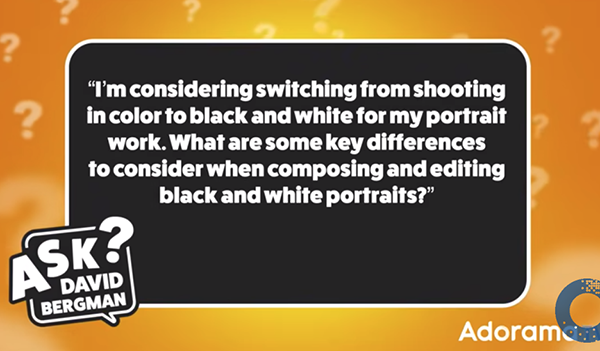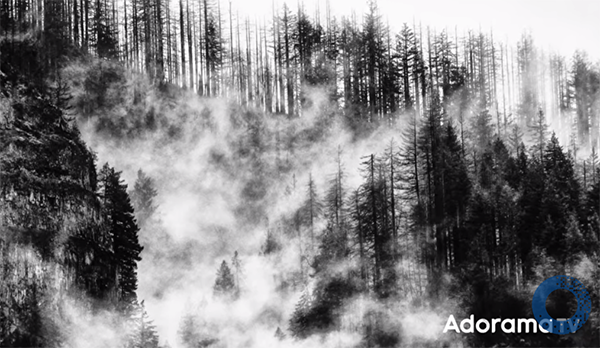Black and White Photography: Why, When & How (VIDEO)

Today's tutorial from our friends at Adorama TV begins with a simple question from a reader: "I'm considering switching from shooting in color to black and white for my portraits work. What are some key differences to consider when composing and editing in monochrome?"
This query was submitted to the unique Ask David Bergman website where you can pose questions and receive a response from this eclectic NY-based photographer. Bergman is a professional photographer and educator with over 30 years of experience shooting everything from sports and live concerts in the pit to celebrity portraits and performance tours. He even has 13 Sports Illustrated covers to his credit.
Bergman's response to the aforementioned question begins with a brief history of b&w photography looking all the way back to when the first known photo was captured in 1826 and continued on through other new technologies like the daguerreotype and beyond. Back then, monochrome images were the only way to capture light and shadow with a camera.

There's also a nod to Ansel Adams and other iconic masters as Bergman explains why he shoots in b&w on occasion, and these instances go beyond capturing dramatic portraits. He explains the general concept like this: "I'll choose black and white when the color in an image just doesn't add anything to the photo. I've often said that everything should be in an image for a reason, and if color isn't helping get rid of it."
It boils down to the simple notion that some subjects are far more compelling when rendered in monochrome, and Bergman describe the "practice, techniques, and psychology" behind this fact as it pertains to modern digital photography.
Bergman covers a lot of ground in less than nine minutes, so we suggest jotting down a few notes. He explores the benefits of b&w vs. color with regard to portraiture and other popular genres, and how to get the job done in-camera. You'll also learn a straightforward workflow for shooting in color and converting the files during post processing and he illustrates a few advanced conversion techniques that work particularly well when editing formal portraits and other types of people pictures.

This comprehensive guide is designed for shooters of all skills levels and describes how to employ dedicated software that provides excellent results. Skillful composition and using light to advantage are other key aspects that factor into the equation, and Bergman demonstrates why and how these techniques work so well.
There's much more to learn on the Adorama TV YouTube channel, so be sure to take a look. And be then visit the popular Ask David Bergman website and pose questions of your own. You may even find his response published here on our website.









































